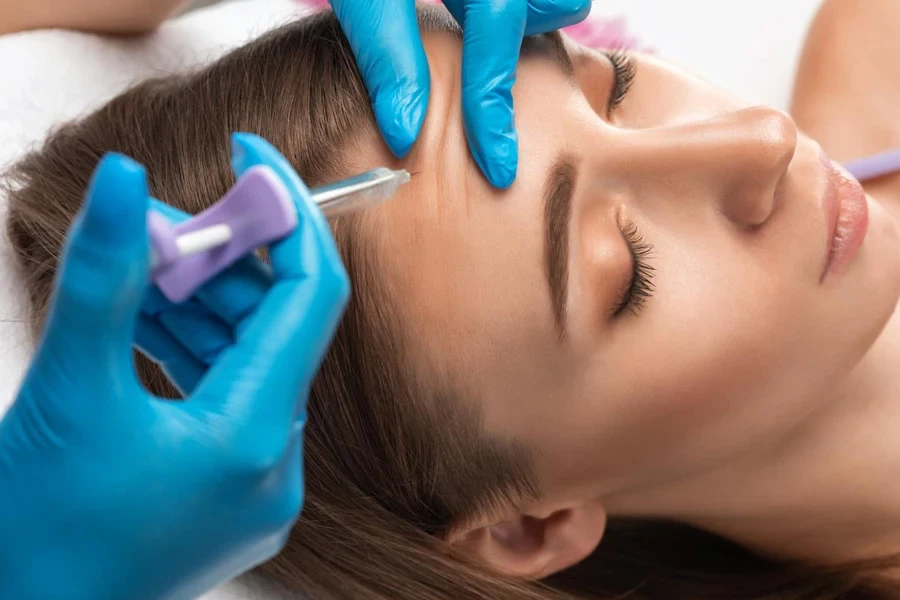Table of Contents
Overview
Market analysis and product diversity
Demographic shifts and consumer behavior
Challenges and pricing dynamics
The rise of ethical and inclusive beauty
Future trends and market predictions
Overview
The global demand for dermatological skin care products is surging among consumers who are increasingly conscious about beauty, spurred by the use of highly effective formulas by manufacturers. Additionally, the trend of incorporating natural, derived from nature, and organic ingredients into skin care products across a wide range of price points is making these products accessible to consumers from all financial backgrounds, further fuelling market expansion. The value of the worldwide skin care products market stood at $170.7 billion in 2021 and is forecasted to climb to $241.5 billion by 2025, with an expected Compound Annual Growth Rate (CAGR) of 3.6% from 2024 to 2025. This article delves into the key factors propelling the skin care products market forward, spotlighting the trends, challenges, and opportunities shaping the future of beauty and personal care.
Market Analysis
The market for skin care products offers a wide array of items including face creams, body lotions, face washes, and various other products designed for skin care. These specialized products aim to heal damaged skin while enhancing its natural beauty and glow. They play a crucial role in hydrating dry skin, eliminating excessive oil from oily skin, and supporting the overall well-being of the skin. Given their varied functions, it’s essential to use a range of skin care products tailored to meet specific needs.

Cosmetics have become an essential part of modern life, driven by contemporary standards for personal appearance and social conduct, leading to an increased focus on external beauty. This shift has significantly contributed to the growing demand for skin care products. The expansion of the global population, coupled with rising incomes, has further boosted the consumption of these products. Rapid economic development and higher disposable incomes worldwide are altering consumer lifestyles. People are becoming increasingly conscious of skin care and hygiene importance, prompting them to invest in skin care products. Moreover, not just women but men too are incorporating skin care products into their daily routines, propelling the global market forward. This lifestyle evolution has spurred growth in the skincare and cosmetic sectors globally. Consequently, changes in lifestyle preferences, especially in emerging economies, have played a crucial role in advancing the global skin care products market.
Demographic distribution
People of all age groups turn to a variety of skin care products, including moisturisers, lotions, skin-lightening creams, toners, serums, sunscreens, body lotions, and body oils, among others, to prevent premature aging, acne, and dark spots, and to boost their appearance. A growing number of individuals are leaning towards these products as a means to protect and care for their skin amidst the challenges posed by environmental changes. Additionally, a significant portion of consumers is taking the initiative to educate themselves about their unique skin types and their specific care requirements.

This informed approach is leading to an increased demand for skincare products tailored to individual skin needs, thereby contributing to the expansion of the market. Younger consumers in particular are showing an increased interest in skin care products, aiming to establish healthy skin care routines early on. This trend is playing a significant role in driving the growth of the skincare products market.
Challenges and pricing dynamics
The increase in raw material costs significantly affects the manufacturing expenses of products, leading to higher prices for the end products. This issue poses a major challenge to the growth of the global skin care products industry. Higher product prices are likely to reduce demand in price-sensitive developing countries like India and China. While high costs will have a more pronounced impact on emerging economies compared to developed ones such as the U.S. and the UK, price-conscious consumers in these developed regions will also feel the pinch as product prices escalate. This situation imposes a constraint on the skin care products market. Moreover, innovations in packaging materials for skin care products, such as the use of recycled plastics and cardboard, further contribute to a rise in product prices as manufacturers seek to maintain their profit margins. The increased cost of both ingredients and packaging materials adversely affects the skin care products market.
The rise of ethical and inclusive beauty
Active participants in the skin care products market are introducing innovative products to attract consumer interest. They are developing advanced face creams and body lotions with higher Sun Protection Factor (SPF) and skin-soothing ingredients like aloe or coconut butter to protect against sun damage. Additionally, to cater to the growing demand for ethical skin care, numerous brands are incorporating natural and derived-from-nature ingredients into their offerings, ensuring that many products are completely vegan. Furthermore, a significant trend among skin care product manufacturers is the creation of gender-neutral cosmetics suitable for men, women, and non-binary individuals alike. This approach is anticipated to further drive the growth of the skin care products market in the future.

Trends analysis takes out
- Face creams were the most popular type of skin care product in 2023 and body lotions are expected to witness the highest growth in the future.
- Women’s skincare products are still leading the market, but the products of Men are taking over the place, or even non-binary skin care products.
- Mass-produced skin care products that are created in large quantities are used to hydrate the skin and give it a healthy glow.
Future trends and market predictions
Leading company executives report that skin care products are among the most commonly used cosmetics and personal care items globally. A vast majority of individuals worldwide utilize these products frequently to rejuvenate or repair skin damage caused by environmental factors such as sun exposure, pollution, and dust. The extensive variety of brands and products in the skincare market offers consumers ample choices, fostering the market growth.
Affordable skincare items have emerged as the preferred choice for consumers with middle to lower incomes, attributed to their accessibility and budget-friendly prices. As these products are in high demand, major skin care product manufacturers primarily target the economic segment. However, with the global rise in living standards, there is an increasing demand for high-end products. Many brands are now creating premium versions of their budget-friendly products, aiming to deepen customer loyalty and facilitate a smooth transition to more luxurious options, all while maintaining their presence in the budget-friendly range.

The future will see a surge in the popularity of organic and natural skin care products as consumer preference shifts towards eco-friendly, green, and vegan options. Companies are moving away from synthetic ingredients to safeguard skin health. The growing demand for serums, scrubs, face packs, toners, and other skin care items in developing nations is expected to drive market expansion. Additionally, continuous innovation by manufacturers to deliver superior products will further fuel the growth of the skincare products market.




